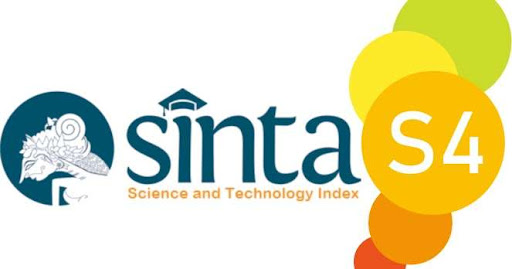GENDER ISSUES IN MARY NORTON’S NOVEL ENTITLED “THE BORROWERS” : A LITERATURE REVIEW
DOI:
https://doi.org/10.36733/sphota.v13i2.2103Keywords:
The Borrowers, feminist perspectives, library researchAbstract
Feminist literary criticism has been focused on the marginalization of women in literary texts and the efforts to deconstruct patriarchy through counter texts, such as Mary Norton’s The Borrowers. This paper aims to review previous studies and expert opinions on Norton’s The Borrowers, especially the arguments in the form of feminist literary criticism. This study employed George’s (2008) model of literature review to review articles employing feminist literary criticism in "The Borrowers." The articles were gathered from books, academic journals, and previous studies on Norton’s The Borrowers. The review reveals that the novel depicted a feminine and masculine environment, constructing biased gender roles and labor division that triggered efforts to gain emancipation and independence in the female character. Telling about miniature family who survived by “borrowing” items from a human, The Borrower is centered towards the young female who deconstructed the traditional binary oppositions concerning the work division and spatial division between males and females. Besides, The Borrowers also presented women’s marginalization, women’s struggles, and gender identity. Such revelation might be useful to extend the fight for gender equity, especially for the children as the target readers.
Abstrak
Kritik sastra feminis telah difokuskan pada marginalisasi perempuan dalam teks sastra dan upaya untuk mendekonstruksi patriarki melalui teks tandingan, seperti The Borrowers karya Mary Norton. Tulisan ini bertujuan untuk mengkaji kajian-kajian terdahulu dan pendapat para ahli tentang The Borrowers karya Norton, khususnya argumentasi-argumentasi berupa kritik sastra feminis. Penelitian ini menggunakan model literature review George (2008) untuk mengkaji artikel-artikel yang menggunakan kritik sastra feminis dalam "The Borrowers". Artikel dikumpulkan dari buku, jurnal akademik, dan studi sebelumnya tentang The Borrowers dari Norton. Tinjauan terdahulu mengungkapkan bahwa The Borrowers menggambarkan lingkungan feminin dan maskulin, membangun peran gender yang bias dan pembagian kerja yang memicu gerakan emansipasi dan kemandirian dalam karakter wanita. Menceritakan tentang keluarga mini yang bertahan hidup lewat “meminjam” barang dari manusia, The Borrower berpusat pada perempuan muda yang mendekonstruksi oposisi biner tradisional mengenai pembagian kerja dan pembagian ruang antara laki-laki dan perempuan. Selain itu, The Borrowers juga menampilkan marginalisasi perempuan, perjuangan perempuan, dan identitas gender. Penceritaan tersebut dapat berguna untuk perpanjangan perjuangan kesetaraan gender terutama bagi anak-anak sebagai target pembaca.
References
Abrams, M. H. (1999). The mirror and the lamp: Romantic theory and critical
tradition. London: Oxford University Press.
Ariantini, K. P., Suwastini, N. K. A., Adnyani, N. L. P. S., Dantes, G. R., & Jayantini,
I. G. A. S. R. (2021). Integrating social media into English language learning: How and to what benefits according to recent studies. NOBEL: Journal of Literature and Language Teaching, 12(1), 91–111. Retrieved from https://doi.org/https://doi.org/10.15642/NOBEL.2021.12.1.91-111
Blangsinga, G. W. K. A. A., Suwastini, N. K. A., Lasmawan, I. W., Adnyani, N. L. P.
S., & Rusnalasari, Z. D. (2021). Patriarchal binary oppositions in narrative texts included in English textbook for senior high school in Indonesia. In 2nd International Conference on Technology and Educational Science (ICTES 2020) (pp. 135–141). Atlantis Press. Retrieved from https://doi.org/https://dx.doi.org/10.2991/assehr.k.210407.227
De Beauvoir, S. (1956). The Second Sex. London: Lowe and Brydone Ltd.
Faludi, S. (1992). Backlash: The Undeclared War Against Women. London: Crown
Publishing Group.
García, C. V. (2002). Pride and Prejudice: Post-war childhood and modern children’s
fiction. Babel, 11, 63–74. Retrieved from http://revistas.webs.uvigo.es/index.php/AFIAL/article/view/163/161
George, M. W. (2008). The elements of library research: What every student needs to
know. Princeton: Princeton University Press.
Gilead, S. (2015). Borrowing and children’s literature. Childhood: A Journal for the Study and Research of Children’s Culture, 1, 130–135. Retrieved from https://www.gordon.ac.il/sites/gordon/UserContent/files/gilad.pdf
Gill, R. (1995). Mastering English Literature (Second Edi). Hampshire: Palgrave.
Hopkins, C. (2000). Arrietty, Homily, Pod: Home, Size, Gender, and Relativity in The
Borrowers. Children’s Literature Association Quarterly, 25(1), 21–29. Retrieved from https://doi.org/doi:10.1353/chq.0.1643.
Kim, N. W., Bach, B., Im, H., Schriber, S., Gross, M., & Pfister, H. (2018). Visualizing nonlinear narratives with story curves. IEEE Transactions on Visualization and Computer Graphics, 24, 595–604. Retrieved from https://doi.org/https://doi.org/10.1109/tvcg.2017.2744118
Lightburn, J. A. (2011). Adapting Arrietty: Hayao Miyazaki’s re-telling of Mary Norton’s ‘The Borrowers’. In The Fairy Tale and Anime: Myth and Legend of Japan (pp. 97–114). Japan. Retrieved from http://kiyou.lib.agu.ac.jp/pdf/kiyou_14F/14_37_1F/14_37_1_97.pdf
Millet, K. (1970). Sexual politics. Garden City, New York: Doubleday.
Norton, M. (1953). The Borrowers. London: Harcourt, inc.
O’Malley, A. (2003). Mary Norton’s ‘Borrowers’ Series and the Myth of the Paternalist Past. Children’s Literature, 31, 71–89. Retrieved from https://doi.org/https://doi.org/10.1353/chl.2003.0013
Pace, P. (1991). The body‐in‐writing: Miniatures in Mary Norton’s Borrowers. Text and Performance Quarterly, 11(4), 279–290. Retrieved from https://doi.org/https://doi.org/10.1080/10462939109366019
Rustin, M., & Rustin, M. (1986). Deep structures of fantasy in modern British children’s books. The Lion and the Unicorn, 10(1), 60–82. Retrieved from https://doi.org/https://doi.org/10.1353/uni.0.0106
Suwastini, N. K. A. (2011). The interplaying of feminist issues in the adaptation of Jane Austen’s novels in America in the 1990s–2000s. In International Conference on Social Science and Humanity (Vol. 5, pp. 270–274). Singapore: IACSIT Singapore. Retrieved from
https://scholar.google.com/scholar?oi=bibs&cluster=10892567765545534733
&btnI=1&hl=en
Suwastini, N. K. A. (2013). Perkembangan Feminisme Barat dari Abad Kedelapan belas hingga Postfeminisme: Sebuah Kajian Teoretis. Jurnal Ilmu Sosial Dan Humaniora.
Suwastini, N. K. A., Banjar, I. D. A. O. V. J., Tienty, L. P. C. A., Sasmita, I. M. D. G., & Nitiasih, P. K. (2020). Rachel Chu as liberal feminist in Kevin Kwan’s Crazy Rich Asians (2013). International Journal of Language and Literature, 4(3), 123–132.
Suwastini, N. K. A., Suprianti, G. A. P., & Fitrianti, N. K. (2018). Are the women really strong? An analysis on the characterizations of the female main character in Murti Bunanta’s ‘Seri Wanita Perkasa’. In M. H. Santosa, I. M. S. Paramarta, N. L. P. S. Adnyani, & I. G. A. L. P. Utami (Eds.), International Conference on English Across Culture (Vol. 4, pp. 108–119). Singaraja: Undiksha Press. Retrieved from https://doi.org/10.1002/jctb.5000423502
Virginia, B. (2014). Literary Borrowings in ‘The Borrowers’: Intertextuality in Mary Norton’s children’s book series ‘The Borrowers’. Università Ca’ Foscari Venezia. Retrieved from http://hdl.handle.net/10579/4675














